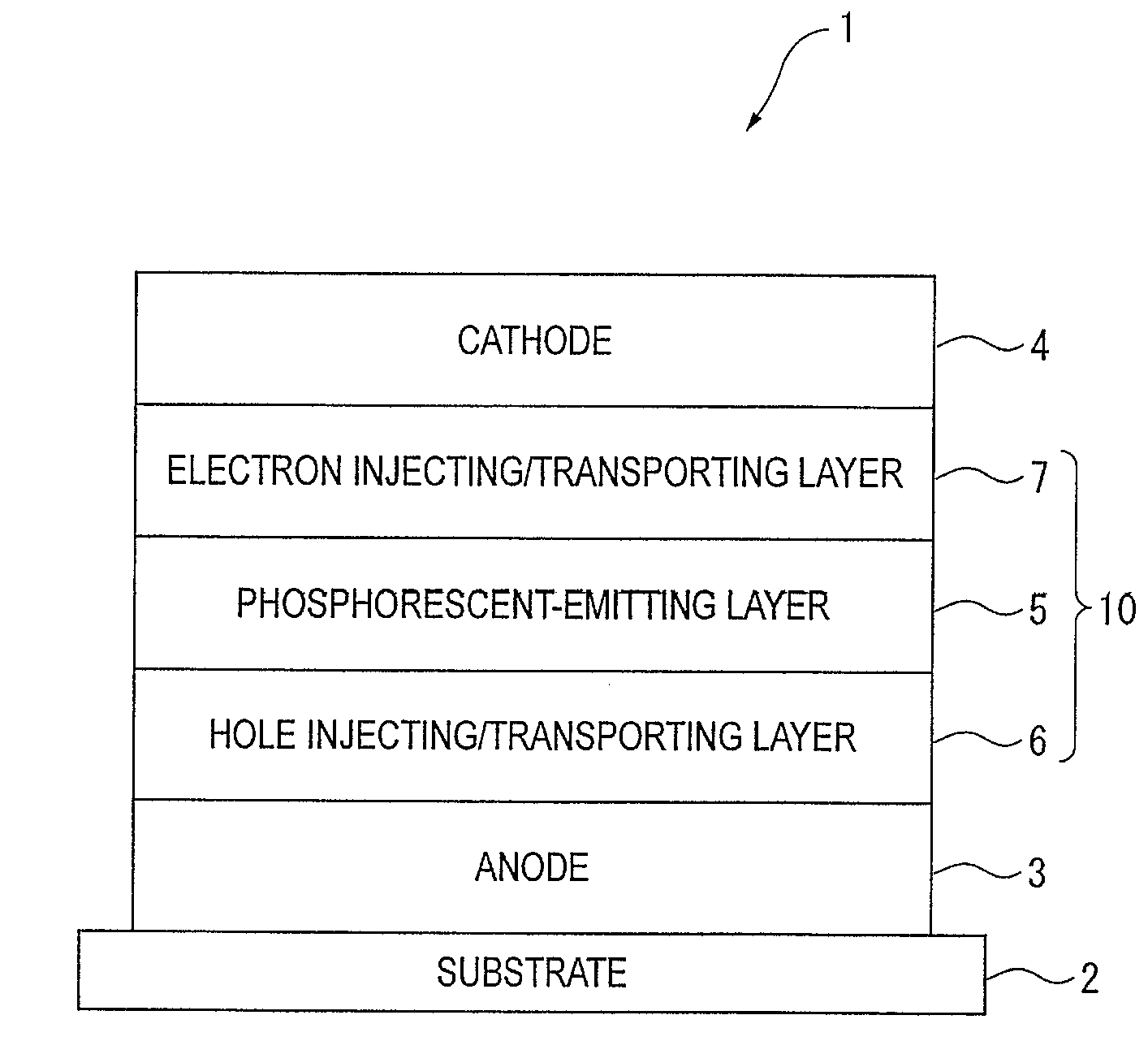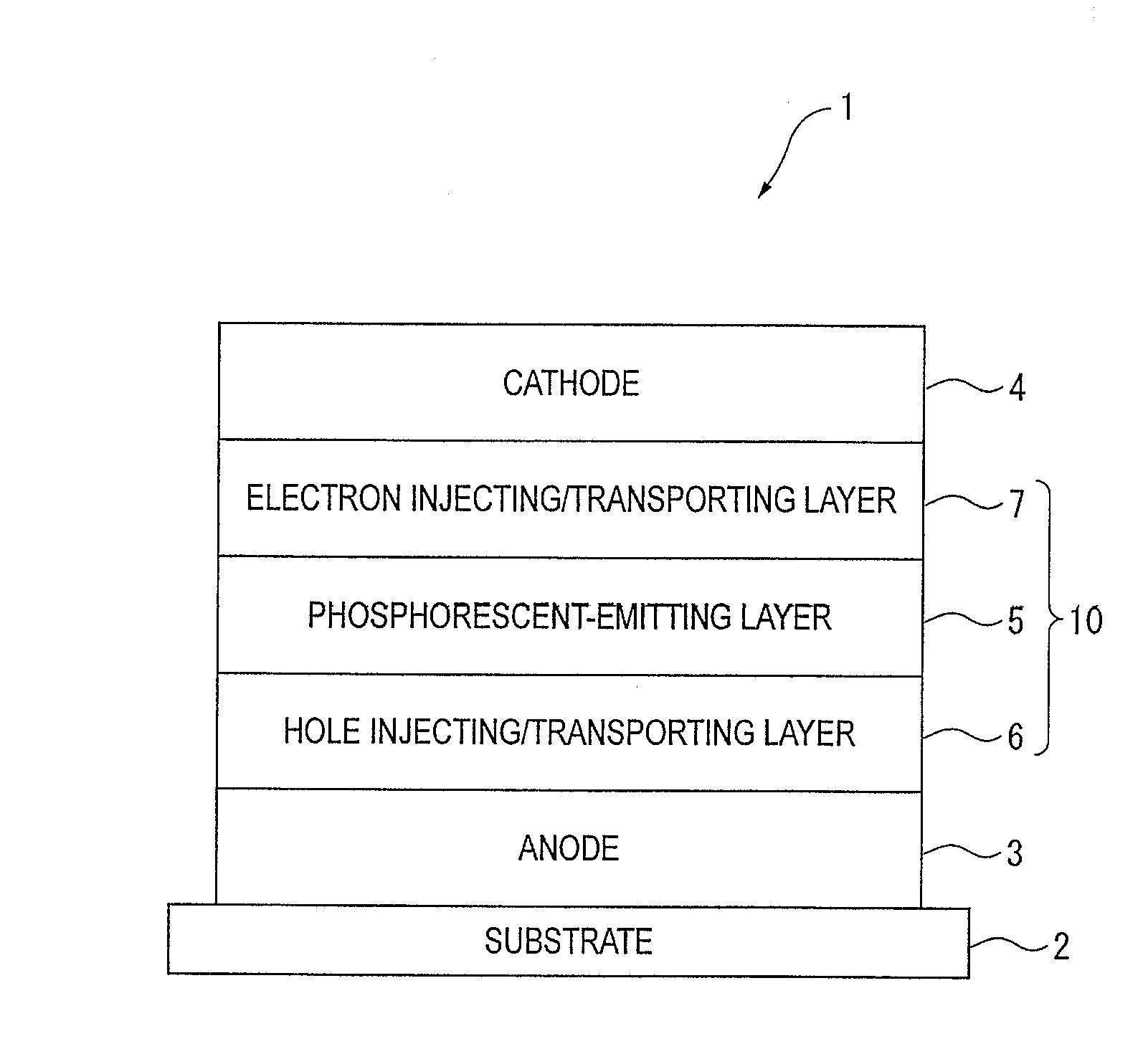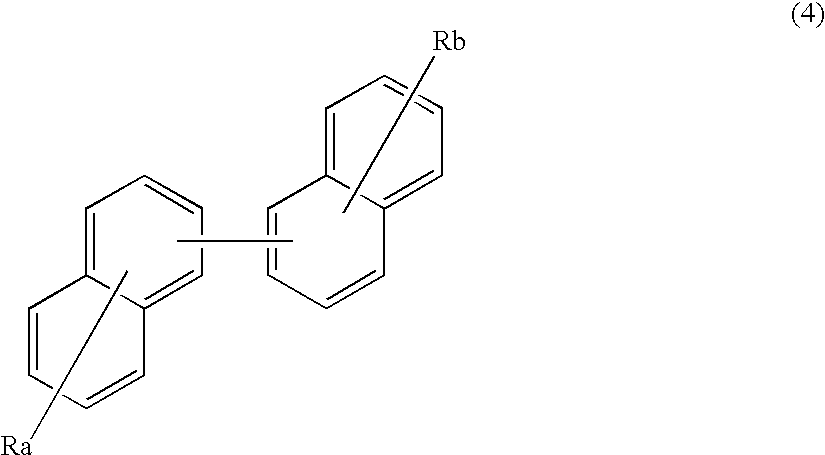Organic electroluminescence device and material for organic electroluminescence device
- Summary
- Abstract
- Description
- Claims
- Application Information
AI Technical Summary
Benefits of technology
Problems solved by technology
Method used
Image
Examples
synthesis example
[0303]Compounds according to the present invention can be synthesized by Suzuki-Miyaura cross coupling reaction. For instance, the compounds are synthesized as shown in the following chemical reaction formulae.
(Ra—Ar1—Br)+((OH)2B—Ar2—Rb→Ra—Ar1—Ar2—Rb
((Ra—B(OH)2)+I—Ar1—Br)→(Ra—Ar1—Br))
[0304]Next, a manufacturing method of the host material according to the present invention will be described with reference to synthesis example(s). However, the present invention is not limited to such synthesis examples.
[0305]Under an argon gas atmosphere, 8.0 g (21 mmol) of 2-bromo-6-(9-phenanthryl)naphthalene, 6.2 g (21 mmol) of 3-(9-phenanthryl)phenylboronic acid, 490 mg (0.42 mmol) of tetrakis(triphenylphosphine)palladium(0), 150 mL of toluene, 50 mL of dimethoxyethane and 30 mL of 2M sodium carbonate solution were mixed, and stirred for 12 hours at 90 degrees C. Subsequently, the reaction mixture was cooled down to room temperature, added with water and stirred for one hour. Then, the reaction mi...
example 1
[0330]Manufacturing of Organic EL Device
[0331]A glass substrate (size: 25 mm×75 mm×0.7 mm thick) having an ITO transparent electrode (manufactured by Asahi Glass Co., Ltd) was ultrasonic-cleaned in isopropyl alcohol for five minutes, and then UV / ozone-cleaned for 30 minutes. After the glass substrate having the transparent electrode line was cleaned, the glass substrate was mounted on a vacuum deposition apparatus, so that 50-nm thick film of HT1 was initially formed to cover a surface of the glass substrate where the transparent electrode line was provided. The HT1 film serves as a hole injecting / transporting layer. Subsequently to the formation of the hole injecting / transporting layer, 40-nm thick film of the compound B24 and a film of Ir(piq)3 as a phosphorescent dopant were co-evaporated by resistance heating so that Ir(piq)3 was contained therein with a content of 10 mass %. The co-deposited film serves as an emitting layer (phosphorescent-emitting layer). After the film of the...
PUM
| Property | Measurement | Unit |
|---|---|---|
| Wavelength | aaaaa | aaaaa |
| Wavelength | aaaaa | aaaaa |
| Energy | aaaaa | aaaaa |
Abstract
Description
Claims
Application Information
 Login to View More
Login to View More - R&D
- Intellectual Property
- Life Sciences
- Materials
- Tech Scout
- Unparalleled Data Quality
- Higher Quality Content
- 60% Fewer Hallucinations
Browse by: Latest US Patents, China's latest patents, Technical Efficacy Thesaurus, Application Domain, Technology Topic, Popular Technical Reports.
© 2025 PatSnap. All rights reserved.Legal|Privacy policy|Modern Slavery Act Transparency Statement|Sitemap|About US| Contact US: help@patsnap.com



